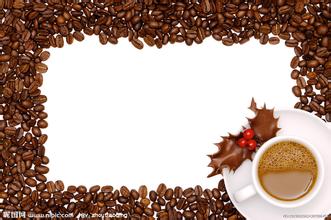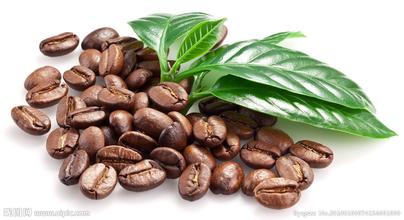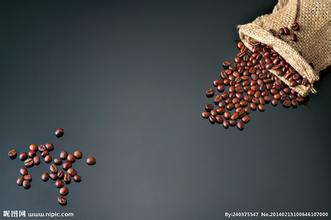Almond dry aroma Bolivian coffee grind characteristics Variety flavor taste introduction
The legal capital, seat of the Supreme Court, has a population of 284,000 and an altitude of 2790 meters. Founded in 1538, the city was formerly known as Chuquisaca. In 1809, the city broke out the first uprising against Spanish rule in South America. Bolivia declared independence here in 1825. It was designated as the capital in 1826. In 1839, it was renamed Sucre in honor of the second president of Bolivia, General Antonio Jose Sucre. In 1898, the central government, presidential palace and parliamentary hall were moved to Las Vegas. The Supreme Court remained in Sucre. Sucre has been listed by UNESCO as a cultural heritage of mankind. Bolivia's national emblem has an oval in the middle.
There are sun, mountain, bread tree, camel, grain and other patterns on the round surface. The bottom half of the circle has ten pentagrams representing the nine provinces that make up Bolivia and the coastal provinces taken by Chile; the top half reads Bolivia in Spanish. Three flags hang on each side of the oval; a rod and weapon cross the back, symbolizing authority; and a "cap of freedom" at the top of the rod on the left. At the top of the oval is a large vulture known as the condor, symbolizing strength and freedom. The eagle is flanked by cassia branches and olive branches, representing the pride of the people of the country in their national freedom and their desire to live in harmony with other peoples.
Wash Bolivia with a cup of water by hand. It is recommended to wash Bolivia with 15 g powder at 87 ℃, water powder ratio 1:15, moderate grinding (small Fuji ghost tooth knife 3.5-4 grinding), V60 filter cup, first water injection 30g water for 25s steam-steaming, injection to 110g water cut off water, wait for the powder bed water to drop to half, then inject water slowly until 230g water, tail section does not, extraction time 2:00 s.
Flavor: Dry aromas of roasted nuts and almonds, soft fruit acids of orange and white pomelo on the palate, sweet caramel on the whole, smooth texture of nutty milk, cleanliness and balance are also quite eye-catching, and the herbal aroma in the aftertaste is quite charming.
Altitude: 3812m
Region: Lake Titicaca
Degree of roasting: medium roasting
Treatment method: washing
Type: Iron Pickup
Producers: small farmers in Koppakapana
Flavor: Roasted nuts and dried almonds, orange, white pomelo Lake Titicaca is located on the Coyao Plateau at the border between Bolivia and Peru. It is the highest and largest freshwater lake in South America. It is also one of the largest freshwater lakes in the world. It is also the highest lake navigable by ships in the world. It is the third largest lake in South America (after Lake Maracaibo and Patus Lagoon).

Important Notice :
前街咖啡 FrontStreet Coffee has moved to new addredd:
FrontStreet Coffee Address: 315,Donghua East Road,GuangZhou
Tel:020 38364473
- Prev

Citrus-flavored Panamanian Rosa Coffee Variety characteristics introduction to the taste of fine coffee beans in the producing area
The dry aroma of Rosa is very bright, with aromas of rose and jasmine, with aromas of pomelo and citrus, light baked with nutty aromas, and wet aromas with hazelnut and more floral characters. In terms of taste and flavor, compared with the previously rising aroma, the early aroma may be slightly mild and subtle, a little cooler, and the flower and fruit flavor will gradually increase with the decrease of temperature.
- Next

Characteristics of grindability of Dominica Santo Domingo Coffee with strong aroma introduction to taste treatment of varieties in producing areas
The earliest coffee in Dominica was introduced from Martinique (the overseas province of France), dating back to the early 18th century. Dominica is an island country with a tropical climate. The temperature changes little throughout the year. Except for the lower temperature in the Central Cordillera Mountains, which can reach less than 0 ℃ in winter, the annual average temperature in other areas is between 25 and 30 ℃, which is affected by the mountain topography.
Related
- Detailed explanation of Jadeite planting Land in Panamanian Jadeite Manor introduction to the grading system of Jadeite competitive bidding, Red bid, Green bid and Rose Summer
- Story of Coffee planting in Brenka region of Costa Rica Stonehenge Manor anaerobic heavy honey treatment of flavor mouth
- What's on the barrel of Blue Mountain Coffee beans?
- Can American coffee also pull flowers? How to use hot American style to pull out a good-looking pattern?
- Can you make a cold extract with coffee beans? What is the right proportion for cold-extracted coffee formula?
- Indonesian PWN Gold Mandrine Coffee Origin Features Flavor How to Chong? Mandolin coffee is American.
- A brief introduction to the flavor characteristics of Brazilian yellow bourbon coffee beans
- What is the effect of different water quality on the flavor of cold-extracted coffee? What kind of water is best for brewing coffee?
- Why do you think of Rose Summer whenever you mention Panamanian coffee?
- Introduction to the characteristics of authentic blue mountain coffee bean producing areas? What is the CIB Coffee Authority in Jamaica?

